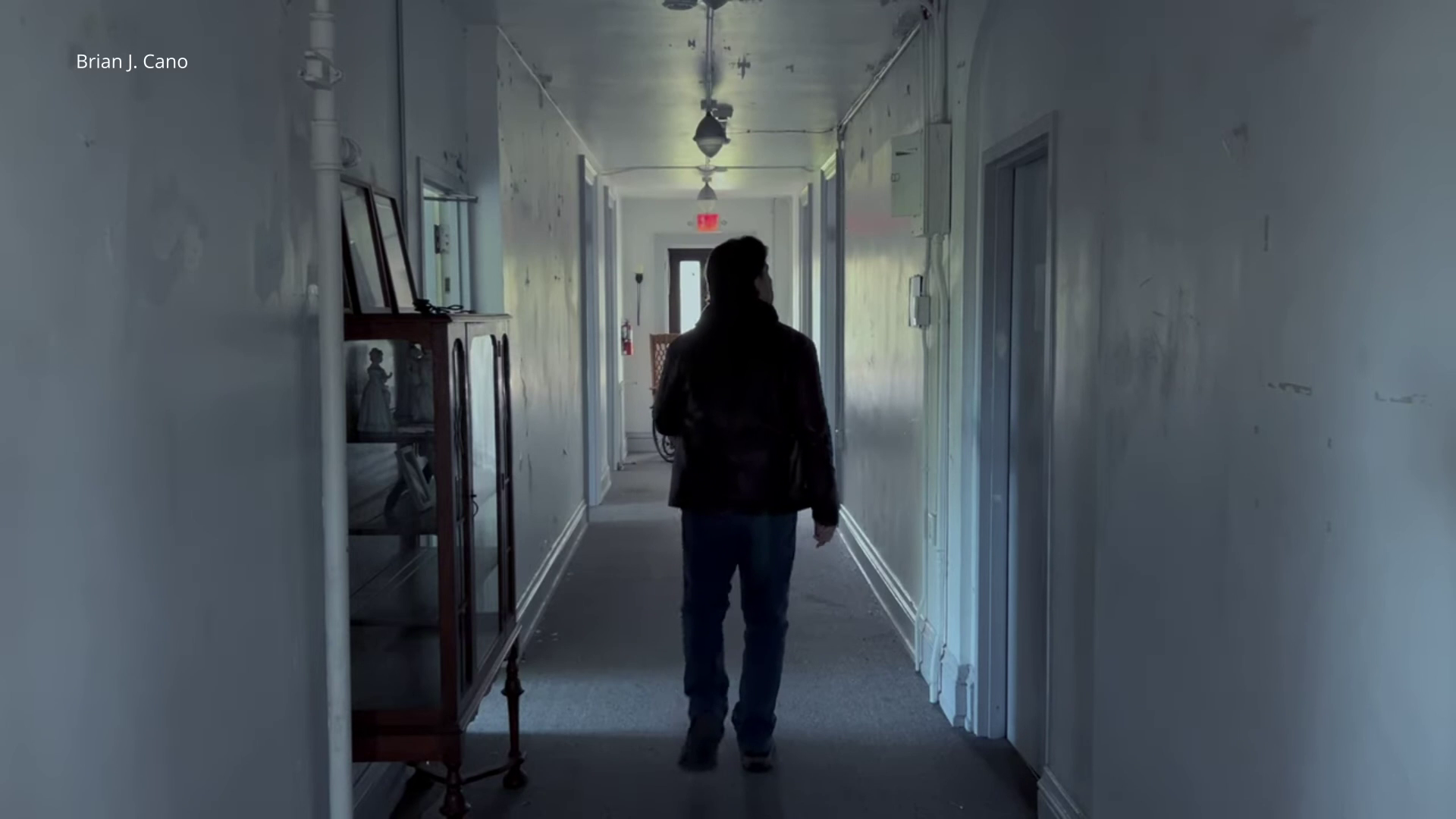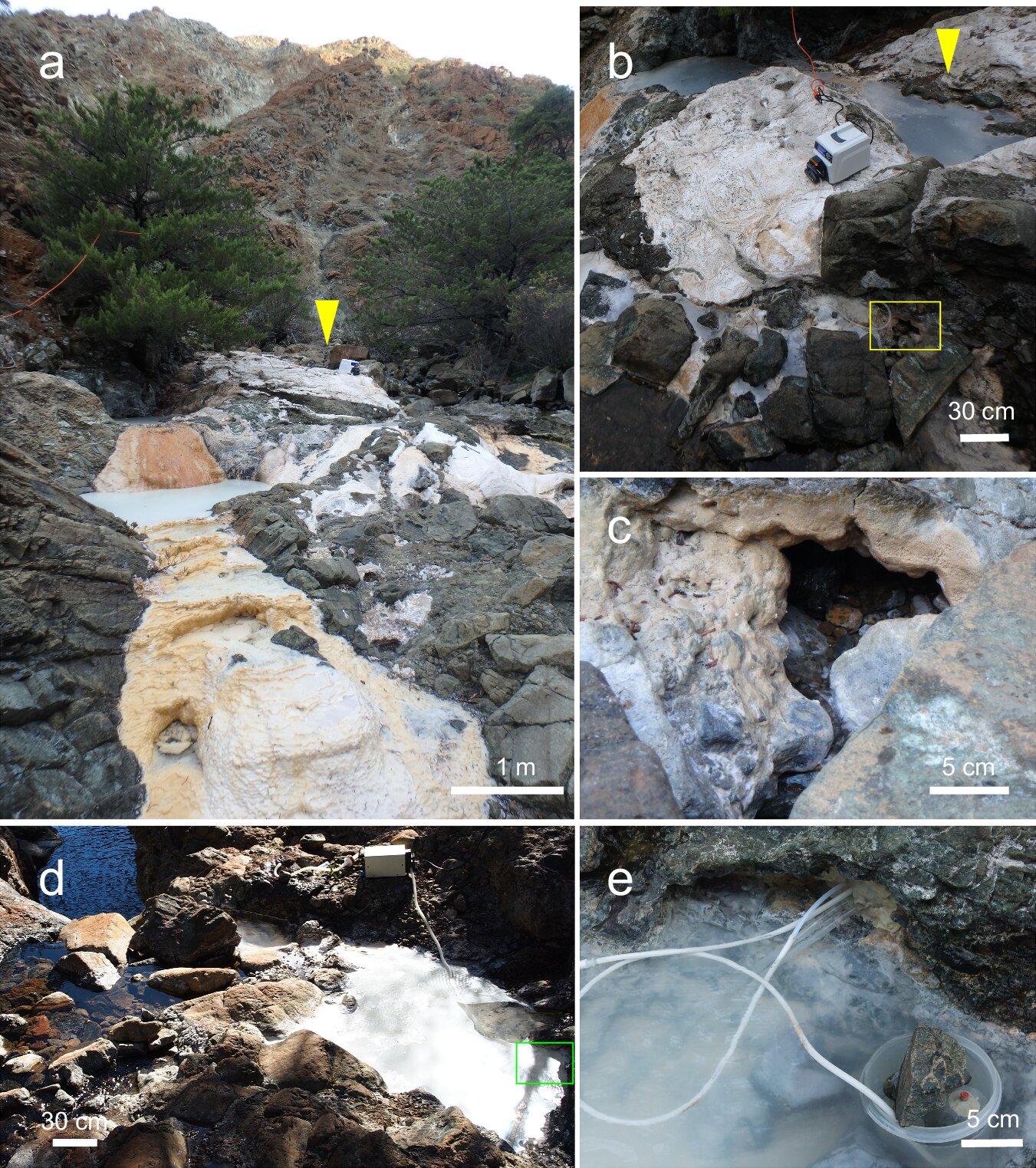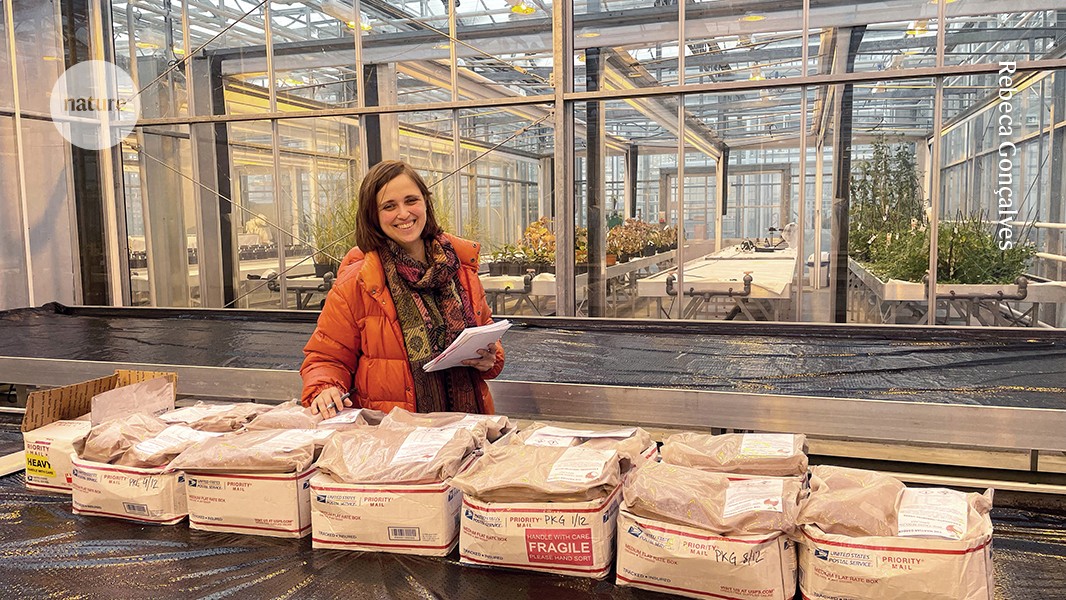 www.twz.com
www.twz.com
Like its predecessor, BriteStorm can scoop up hostile radar emissions and emulate returns to create large numbers of false and confusing ‘ghost’ tracks and can also execute more traditional jamming, with even more adaptive capabilities on the horizon.
 thedebrief.org
thedebrief.org
Scientists have discovered that exposed ice on Mars could create conditions suitable for photosynthesis, suggesting the possibility that microbial life could thrive there despite the planet’s harsh environment and intense ultraviolet radiation. The new findings reveal the potential for the existence of life on the Red Planet near its sub-latitudes, revealing that photosynthetic organisms may be uniquely suited for survival in certain icy exposed regions on the planet.
 theconversation.com
theconversation.com
Today the perilous state of the environment is often in the news. Many stories describe how Earth is being damaged by human beings and discuss ways to prevent this. These concerns are not new. Millennia ago, people in ancient Greece and Rome already knew humans were damaging the natural world. Literature from these ancient times contains many references to the environment and the harms it suffers. Many of these insights ring true today. Polluting the soil we farm, air we breathe and water we drink has clear repercussions. We can only degrade the environment for so long before it will come back to haunt us.
 phys.org
phys.org
Given the numerous proposed forms of dark matter, scientists are investigating multiple approaches for their detection. This study centers on understanding how ultralight dark matter behaves in relation to extreme mass ratio inspirals (EMRIs). These systems consist of a supermassive black hole (SMBH) in conjunction with a smaller astronomical body, which may be a star or another black hole. The gravitational waves emitted by these systems as the smaller stellar object spirals into the SMBH could point to the behavior of ultralight dark matter in and around these systems.
The beetle superfamily Elateroidea comprises the most biodiverse bioluminescent insects among terrestrial light-producing animals. Recent exceptional fossils from the Mesozoic era and phylogenomic studies have provided valuable insights into the origin and evolution of bioluminescence in elateroids. The fossil possesses deeply impressed oval pits on the apices of antennomeres 3–11, representing specialized sensory organs likely involved in olfaction. The light organ near the abdominal apex of Flammarionella resembles that found in extant light-producing lucioline fireflies. The growing fossil record of lampyrids provides direct evidence that the stunning light displays of fireflies were already established by the late Mesozoic.
 www.theguardian.com
www.theguardian.com
Research at the Francis Crick Institute could lead to new drugs to counter progress of diseases like Alzheimer’s British scientists are about to launch a remarkable research project that will demonstrate how the air we breathe can affect our brains. This work will be vital, they say, in understanding a major medical problem: how atmospheric pollution can trigger dementia. In recent years, scientists have discovered that air pollution is one of the most pernicious threats to human health and have shown it is involved in causing cancer, heart disease, diabetes, low birthrates, and many health conditions.
 www.universetoday.com
www.universetoday.com
The search for exoplanets has grown immensely in recent decades thanks to next-generation observatories and instruments. The current census is 5,766 confirmed exoplanets in 4,310 systems, with thousands more awaiting confirmation. With so many planets available for study, exoplanet studies and astrobiology are transitioning from the discovery process to characterization. Essentially, this means that astronomers are reaching the point where they can directly image exoplanets and determine the chemical composition of their atmospheres. As always, the ultimate goal is to find terrestrial (rocky) exoplanets that are “habitable,” meaning they could support life. However, our notions of habitability have been primarily focused on comparisons to modern-day Earth (i.e., “Earth-like“), which has come to be challenged in recent years. In a recent study, a team of astrobiologists considered how Earth has changed over time, giving rise to different biosignatures. Their findings could inform future exoplanet searches using next-generation telescopes like the Habitable Worlds Observatory (HWO), destined for space by the 2040s.
A species of tropical butterfly with unusually expanded brain structures displays a fascinating mosaic pattern of neural expansion linked to a cognitive innovation. The study, published in Current Biology, investigates the neural foundations of behavioral innovation in Heliconius butterflies, the only genus known to feed on both nectar and pollen. As part of this behavior, they demonstrate a remarkable ability to learn and remember spatial information about their food sources—skills previously connected to the expansion of a brain structure called the mushroom bodies, responsible for learning and memory. **Highlights** • Heliconiini butterflies have conserved wiring logic in spheroid mushroom body lobes • Kenyon cell populations expanded to differing degrees in Heliconius butterflies • Increased numbers of feedback neurons and conservation in dopaminergic neurons • Mosaic evolution to facilitate cognitive processes associated with pollen feeding
 www.scientificamerican.com
www.scientificamerican.com
An ancient slab of seafloor that was around when Earth’s earliest known dinosaurs emerged, has been discovered beneath the Pacific Ocean, where it has seemingly hovered in a sort of mid-dive for more than 120 million years. In addition to illuminating geological processes deep inside Earth, the cold, descending slab of dense rock, located some 410 to 660 kilometers below the planet’s surface, could explain a mysterious gap between two sections of a giant blob in the mantle layer.
 www.wdio.com
www.wdio.com
Paranormal researcher Brian J. Cano has been investigating ghosts for 22 years now, visiting locations all across the globe. Brian started out as a skeptic but now he says he’s a skeptical believer, which means he thinks there’s something out there but is skeptical on how it’s reported. Saying not everything that happens during the night is paranormal activity. One of those stories talks about Brian’s demonic experience with the circle of fire at the Grand Midway Hotel. Brian says, “When I say off the chart, I mean literally you go down the list: Chris was getting touched, I was hearing things audibly, Lisa Ann was communing directly with spirits… it was the most poignant encounter I ever had.”
From dumping iron into the ocean to launching mirrors into space, proposals to cool the planet through “geoengineering” tend to be controversial—and sometimes fantastical. A new idea isn’t any less far-out, but it may avoid some of the usual pitfalls of strategies to fill the atmosphere with tiny, reflective particles. In a modeling study published this month in Geophysical Research Letters, scientists report that shooting 5 million tons of diamond dust into the stratosphere each year could cool the planet by 1.6ºC—enough to stave off the worst consequences of global warming. The scheme wouldn’t be cheap, however: experts estimate it would cost nearly $200 trillion over the remainder of this century—far more than traditional proposals to use sulfur particles.
Per- and polyfluoroalkyl substances (PFAS) are widely used in consumer and industrial products but have subsequently raised concerns about their toxicity. To evaluate factors influencing PFAS concentrations in drinking water and to estimate human exposure, ten PFAS were measured in tap water from the UK and China, also bottled water originating from 15 different countries. In this study, perfluorooctanoic acid and perfluorooctanesulfonate (PFOS) were the most frequently detected (>99%) and dominated in global bottled water, with other PFAS also highly detected (67%–93%). ∑10PFAS concentrations differed significantly in natural mineral vs purified, but not in glass vs plastic and still vs sparkling bottled water. High detection rates of target PFAS in both tap and bottled water highlight necessary for monitoring a wide range of PFAS. Estimated human exposure of target PFAS via drinking water does not appear serious human health risk. Interestingly, boiling and activated carbon filtration can reduce substantially (50%–90%) concentrations of PFAS in water.
 www.nature.com
www.nature.com
On Earth, solar radiation can transmit down to multiple metres within ice, depending on its optical properties. Organisms within ice can harness energy from photosynthetically active radiation while being protected from damaging ultraviolet radiation. On Mars, the lack of an effective ozone shield allows ~30% more damaging ultraviolet radiation to reach the surface in comparison with Earth. However, our radiative transfer modelling shows that despite the intense surface ultraviolet radiation, there are radiatively habitable zones within exposed mid-latitude ice on Mars, at depths ranging from a few centimetres for ice with 0.01–0.1% dust, and up to a few metres within cleaner ice. Numerical models predict that dense dusty snow in the martian mid-latitudes can melt below the surface at present. Thus, if small amounts of liquid water are available at these depths, mid-latitude ice exposures could represent the most easily accessible locations to search for extant life on Mars.
 phys.org
phys.org
RIKEN scientists looking for clues to the origins of life on Earth have discovered a new microbe that may shed light on how organisms first developed on Earth, the search for life elsewhere in the universe and how to improve microbial factories. Their research, conducted in the rugged, deep-water-fed springs of northern California, uncovered a microorganism that converts carbon dioxide into other chemicals. This process not only generates energy, but employs a previously unknown metabolic pathway, suggesting novel methods of carbon fixation that may mimic the earliest forms of energy metabolism on our planet.
 www.nature.com
www.nature.com
It is well known that dogs are capable of following human verbal instructions. However, very little is known about the equivalent ability in cats. In this study, we used a switched stimuli task to examine whether cats rapidly form picture-word association, which is a fundamental ability for word learning. These results demonstrate that cats can rapidly form picture-word association.
 phys.org
phys.org
Imagine you wake up in a hospital without a single memory of the last month. Doctors say you had a series of violent episodes and paranoid delusions. You'd become convinced you were suffering from bipolar disorder. Then, after a special test, a neurologist diagnoses you with a rare autoimmune disease called anti-NMDAR (Anti-N-methyl-d-aspartate receptor) encephalitis. This is what happened to Susannah Cahalan, a New York Post reporter who would go on to write the best-selling memoir Brain on Fire: My Month of Madness. Anti-NMDAR encephalitis can lead to hallucinations, blackouts, and psychosis, says Cold Spring Harbor Laboratory Professor Hiro Furukawa. It mostly affects women ages 25 to 35—the same age at which schizophrenia often presents itself. But what's happening in anti-NMDAR encephalitis is something else.
Former UAP Task Force insider tells Ross Coulthart: We are not alone
 www.nature.com
www.nature.com
Over the next few months, my colleagues and I started to explore what we could grow in the material. We found that tomatoes, peas and carrots all took to the soil and grew well. But could these plants realistically survive on Mars? The planet does have water, but most of it is frozen at its poles or buried deep underground. So for plants to live, water would need to be pumped up to the surface. Mars has almost no atmosphere and no magnetic field, so plants would have to be housed in colonies, with greenhouse-like structures to protect them. In these, an internal ecosystem with a controlled atmosphere could help the plants to retrieve oxygen through hydrolysis.
 theconversation.com
theconversation.com
Most stars shine in ultraviolet and infrared colours that are blocked by the Earth’s atmosphere, as well as the colours our eyes evolved to see. Extra colours are useful. For example, we can weigh stars on the other side of our galaxy because massive stars are bright in infrared, while smaller ones are faint – and they stay that way throughout their lifetimes. However, we know where stars are being born because only young stars emit ultraviolet light. In addition, independent measurements of the same thing are vital for rigorous science. Infrared telescopes, for example, can work together and have already made surprising discoveries. But it’s not great for diversity that the Webb, Euclid and Roman space telescopes all see infrared colours.
 academic.oup.com
academic.oup.com
Post-mortem studies have shown that patients dying from severe acute respiratory syndrome coronavirus (SARS-CoV-2) infection frequently have pathological changes in their CNS, particularly in the brainstem. Many of these changes are proposed to result from para-infectious and/or post-infection immune responses. Clinical symptoms such as fatigue, breathlessness, and chest pain are frequently reported in post-hospitalized coronavirus disease 2019 (COVID-19) patients. We propose that these symptoms are in part due to damage to key neuromodulatory brainstem nuclei. While brainstem involvement has been demonstrated in the acute phase of the illness, the evidence of long-term brainstem change on MRI is inconclusive. We therefore used ultra-high field (7 T) quantitative susceptibility mapping (QSM) to test the hypothesis that brainstem abnormalities persist in post-COVID patients and that these are associated with persistence of key symptoms.
 Bampot
3w ago
•
100%
Bampot
3w ago
•
100%
That shit is mass produced over here in garages and garden sheds, the only substance that does go into every batch of whatever the manufacturers have to hand is the colouring. Taking it is even more dangerous than giving it a label !
 Bampot
1mo ago
•
100%
Bampot
1mo ago
•
100%
My apologies , twas merely a slip of the finger .. I shall replace the missing Z and O forthwith.
Thank you for pointing this out, Jings, I hadn't actually noticed the missing letters !
This is what happens when you play around on small phone screens without your glasses on ..ha ha
 Bampot
2mo ago
•
100%
Bampot
2mo ago
•
100%
 Bampot
3mo ago
•
100%
Bampot
3mo ago
•
100%
Nope.. No paywall on this version here dude :-
https://www.popularmechanics.com/science/math/a20718322/building-a-time-machine/
 Bampot
3mo ago
•
100%
Bampot
3mo ago
•
100%
This is exactly what the research guys have concluded, whether it be dusty folks in war zones, emergency service personnel or just your ordinary, average everyday dusty dude in the street. The inflammatory response is triggered by a build up of nasties in the body, a combination of toxins, fine particulates and biological pathogens, the end result is immune dysregulation...Bingo!
 Bampot
3mo ago
•
71%
Bampot
3mo ago
•
71%
And again, what you consider to be merely an economic issue is exactly where you seem to be missing the point.
Quarrying is environmentally destructive. It has contamination and pollution issues. It carries health issues. As well as the costly logistics of transporting bulk around the planet. Governments these days no longer wish any company, large or small, to go around tearing rock, in any form - pre ground or otherwise -out of the ground. So your next problem would be sourcing the base materials for your manufactured product legally.
Economically, even if you did manage to quarry,crush,sieve,grade and mix your sand for lets say £1000 a ton. What architect on the planet would specify the use of such an environmentally unfriendly and costly material and what construction company in the world would pay such a price?
Architects are already specifying more sustainable materials and construction techniques are changeing, but at present, people are still destroying the planet and killing each other for sand ! That's the current economic situation.
 Bampot
3mo ago
•
75%
Bampot
3mo ago
•
75%
Nobody is saying that without a time limit and at great expence sand can not be manufactured, but it is not even that simple.
Firstly : You would have to quarry your rock of preference before crushing, sieving, grading, and more than likely, also having to transport your specific rock grains to be mixed with other types of crushed and graded chips, depending on your sands ultimate purpose.
Secondly : It is not cheap to extract stone from the earth plus quarrying leaves very big holes in the ground! Permission from authorities to open new quarries or pits is not easily obtained in most countries.
Thirdly: Crushing is hazardous, polluting, environmentally destructive and very expensive .
The sand problem has been bubbling away on the back burner for years, hence the many and various ongoing efforts from all around the globe to recycle or create new and innovative construction materials.
 Bampot
3mo ago
•
91%
Bampot
3mo ago
•
91%
Why the world is running out of sand
Our planet is covered in it. Huge deserts from the Sahara to Arizona have billowing dunes of the stuff. Beaches on coastlines around the world are lined with sand. We can even buy bags of it at our local hardware shop for a fistful of small change.
But believe it or not, the world is facing a shortage of sand. How can we possibly be running low on a substance found in virtually every country on earth and that seems essentially limitless?
The problem lies in the type of sand we are using. Desert sand is largely useless to us. The overwhelming bulk of the sand we harvest goes to make concrete, and for that purpose, desert sand grains are the wrong shape. Eroded by wind rather than water, they are too smooth and rounded to lock together to form stable concrete.
The sand we need is the more angular stuff found in the beds, banks, and floodplains of rivers, as well as in lakes and on the seashore. The demand for that material is so intense that around the world, riverbeds and beaches are being stripped bare, and farmlands and forests torn up to get at the precious grains. And in a growing number of countries, criminal gangs have moved in to the trade, spawning an often lethal black market in sand.
https://www.bbc.com/future/article/20191108-why-the-world-is-running-out-of-sand
 Bampot
4mo ago
•
100%
Bampot
4mo ago
•
100%
You could be right on the governments dislike of a popular and profitable imported product!.. But what about RPE ?
RPE will not eliminate disease in cases of extended long term exposure.
RPE has only to be used as 'The very last resort'..and is only supposed to be used as..'The very last resort'..and only as..'The very last resort' for short periods of time, as..'The very last resort'
Why do so many people equate the usage of respiratory protection with 'A Safe Working Environment ?'
In areas where long term usage of such protection is required, an operatives working environment is exactly the opposite of 'SAFE' !
There is No Known Safe Working Exposure Limit when working in respirable crystalline silica dust..NONE !
 Bampot
5mo ago
•
63%
Bampot
5mo ago
•
63%
Do I sound upset ? Crikey! ha ha
Sorry duder ,I am immune to upset and trivialities such as social media comments do not even register as irratation on my ragged toenail scale.
I do attempt to upload the original paper where possible, but when (As is par for the course these days) the publication is behind a paywall and as in this case, without even an abstract ,then the news article has to be the option for the post.
Take care and have an article annoyance free day .
 Bampot
5mo ago
•
80%
Bampot
5mo ago
•
80%
Not my headline and I did not write the article
Here is the actual report ,crikey you have to pay for it !!.. Well what a bummer ,there is the reason for posting the news article instead of the actual report..Happy Now ?
Large Study Links Industrial Solvent in Drinking Water to Parkinson Disease Risk in Camp Lejeune Veterans
Neurologist Samuel Goldman, MD, MPH, had long felt obligated to dive into the question of whether the volatile organic compounds (VOCs) that had contaminated the drinking water at Marine Corps Base Camp Lejeune up to the mid-1980s were associated with an increased risk of Parkinson disease.
https://jamanetwork.com/journals/jama/article-abstract/2805182
 Bampot
5mo ago
•
100%
Bampot
5mo ago
•
100%
I would say that slavery could perhaps be considered an occupational hazard!
Slavery or the imprisoning /detaining personel against their will to enforce labour was once common in farming ,construction and many other industries in this country and probably still goes on.
Gangs would (and probably still do) convince unwitting refugees to come over here to work for them on the promise of great wages and full board. Once here these people would be kept in shacks,caravans and the likes, but usually in overcrowded slum conditions, threatened with violence or beaten daily and forced to work without pay or for food (if they were lucky)
A few years back the construction industry raised awareness of this problem and asked the workforce to be vigilant,to keep their eyes open and report any signs or suspicions of enforced labour. Thanks to this awareness campaign many of these gangs were caught and imprisoned ,thousands of illegally detained people were released... The car wash app was set up for a similar purpose
Raising awareness on the subject of occupational hazards is not solely about RPE ,employees face many risks and many hazards...
As for car washing ,PPE required would be waterproof footwear and clothing ,protective gloves , eye protection, a respirator for use when cleaning the inside of dirty vehicles , a respirator would also be required when the likes of chemical sprays, special waxes, sealers, body finishes or any other solvents were in use... Take care
 Bampot
6mo ago
•
100%
Bampot
6mo ago
•
100%
Masks are only supposed to be used as the very last resort ,it matters not a jot if you have a top of the range respirator ,in those conditions workers could put a new filter in their masks every morning and they would still be breathing in dust . No fit is ever perfect and they all leak.
There simply should be no people working in such areas, full stop. Not even if they were kitted out with PAPR respirators and the unit had a regulator specified and fully certified LEV system running 24/7. These are areas where only machines should be employed . But once again it all comes down to production costs and profit..People are cheap. Take care ,stay safe and dust free.
 Bampot
7mo ago
•
100%
Bampot
7mo ago
•
100%
Silica is in many things and widely used everywhere, apart from the obvious dusty trades,sandblasters ,stonemasons,bricklayers,plasters,roofers,painters and decorators, demolition workers frackers ,miners, quarrymen and highway workers.
Plumbers,electricians,refractory workers ,military personnel,tech workers ,lorry and machine drivers ,jewelers ,dental technicians ,farmers,foundry workers,glass workers,horse trainers,potters,metal grinders ,greenhouse gardeners and even teachers of old have been known to succumb to the masons cough ( Which was once known as Potters Rot )and/or one or more of the myriad of silica associated diseases .
( My apologies if I missed anyone out )
Unfortunately there is no known or quantifiable safe occupational limit for silica exposure (Despite what the corporately owned politicians and regulators quote as fact ) and respirators are only supposed to be used as the very last resort ,none are 100% efficient ,they all leak ,hence the coding .
 Bampot
7mo ago
•
100%
Bampot
7mo ago
•
100%
That is exactly how my friend describes his condition only he said people just look like sheep ,which they are. The hospital gave him a yellow shield lanyard and badge to wear when he was first diagnosed which read something like 'If I do not recognise you it is because I suffer from Prosopagnosia ' He stills wears these on public transport because as he would put it " Nobody has a fuckin clue what Prosopagnosia is but they think I must be really ill so somebody usually gives me a seat ".. ha ha
 Bampot
7mo ago
•
100%
Bampot
7mo ago
•
100%
Crikey !That must be very difficult to deal with,I hope you cope and all is well.
I have a friend who developed a similar condition due to a brain injury. From what he tells me he can still see faces as normal just as he did before and can actually recognise some faces as who they are,face to face so to speak ,but photographs are very difficult for him especially group photos ,even of family , to him the faces in his family photographs have recognisably different features, but he does not see in these images anyone he knows,just random people. Quite bizarre ,I suppose every case is different though .
Stay safe ,best wishes and I hope you have a most excellent day ,or night wherever you are .
 Bampot
7mo ago
•
100%
Bampot
7mo ago
•
100%
This is the problem though ,it would take a book to cover all the practical difficulties on how to safely handle any hazardous material on site.
There are fabrication shops these days where humans play no part in the manufacturing process apart from the programming of the machines and pushing a button ,all the cutting is carried out using various methods in sealed units .(Although these yards produce their own serious environmental issues )
What computerised machines in sealed units can not do though is take the prefabricated piece of whatever and install it into it's intended home ,you need Homo sapiens for this purpose and unfortunately this is where dust becomes airborne.
And that is just on new build or installation projects ,once you enter into the big outside world of restoration,renovation,alterations,conservation, demolition,tunneling,mining,crushing ,hydraulic fracturing ..etc etc ,you enter a world where dust has to be created no matter how you handle whatever material has to be removed or altered.
There are thousands of expensive dust reducing safety products out there everything from surfactants to vacuums,not all are practical and none are 100% efficient.
The answer is making sure the workforce is aware of the dangers through training and education,regular health monitoring, and it would also be beneficial to have a functioning safety regulator!